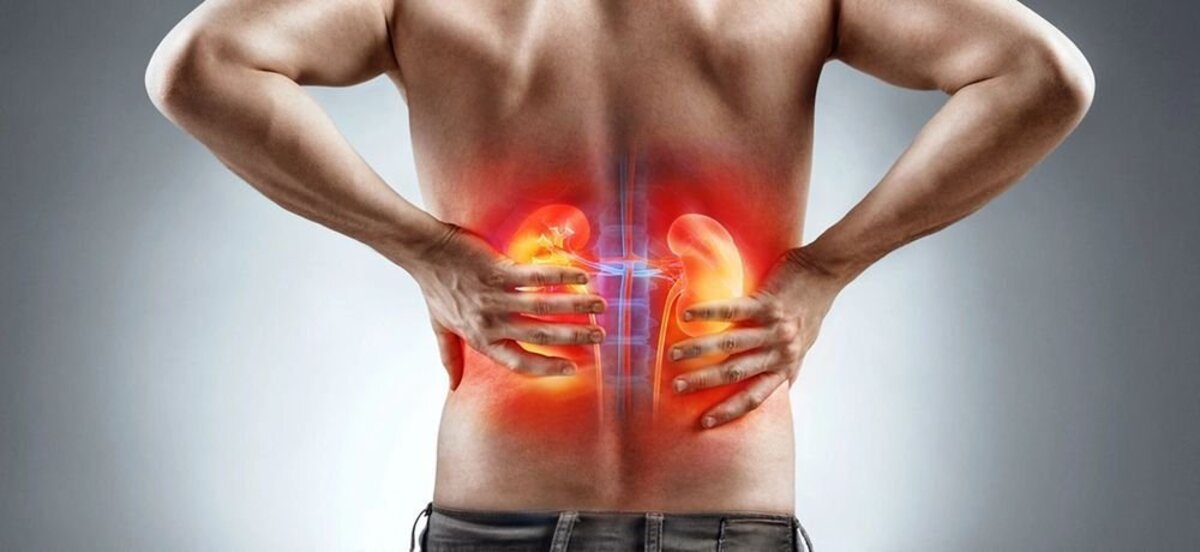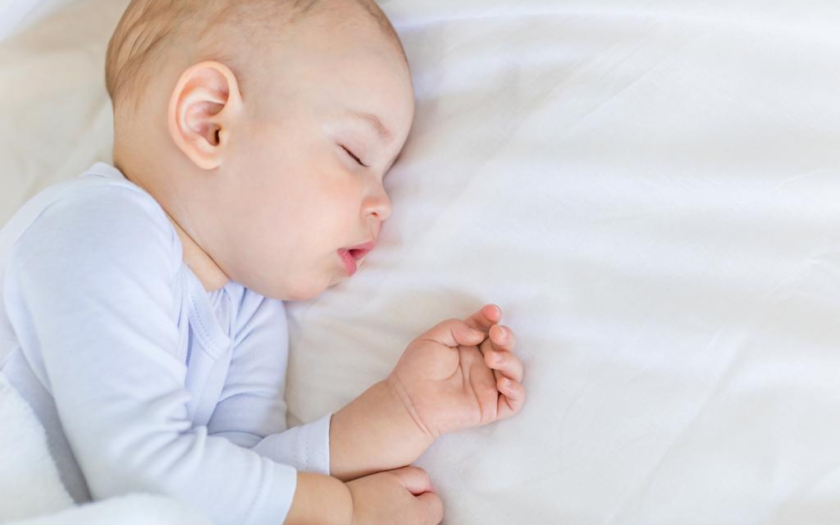Renal colic is an attack of pain that occurs when stones block the urinary tract. According to statistics, renal colic affects 5-15% of the world’s population. The risk group includes people with a hereditary predisposition to urolithiasis and people aged 20-50 years. Also, the risk of developing the symptom increases due to excessive salt intake, the presence of diabetes mellitus and dehydration.
What are the causes of renal colic?
The main cause of renal colic is kidney, bladder or ureter stones. Kidney stones occur with genitourinary infections, dehydration, and gastrointestinal diseases. Other causes of renal colic:
- kidney or ureter spasm;
- kidney vein thrombosis;
- ureter kink;
- kidney inflammation;
- genitourinary neoplasms.
Renal colic can occur due to the ingress of mucus and pus into the ureters in pyelonephritis or urolithiasis. It can also be caused by traumatic damage to the organ.
What are the symptoms of renal colic?
The main sign of renal colic is a sharp pain in the left or right side. Often the spasm is localized between the lower ribs and hip. Other symptoms of renal colic are:
- nausea and vomiting;
- impaired urine flow;
- painful urination;
- blood in the urine;
- persistent urge to urinate;
- cloudy or unusual odor of urine.
In renal colic, there may be fever and chills. The attack may also be accompanied by an increase in blood pressure.
How does the kidney hurt during an attack of colic?
Pain during an attack of renal colic has a contraction-like, sharp and cutting character. Renal pain occurs suddenly due to spasm of the smooth muscles of the ureter wall.
Why does renal colic cause severe pain?
Renal colic pain is caused by dilation of the kidney cavity connected to the ureter due to impaired urine outflow. Since the renal sheath has many nerve endings, their irritation leads to pain in the surrounding muscles.
Where does the pain go when the kidneys hurt?
A characteristic symptom of pain in renal colic in women is irradiation (spreading) to the labia and perineum, and in men – to the scrotum and penis. If the urinary tract is blocked, the pain may spread to the umbilical area and back.
How do I know if my kidneys hurt?
The sensation of pain in the kidney can be confused with other pathologies. Diseases in which the pain syndrome is similar to renal colic:
- gastrointestinal diseases (intestinal obstruction, irritable bowel syndrome, appendicitis, pancreatitis);
- gallbladder pathologies (cholecystitis, biliary colic);
- kidney diseases (polycystic kidney disease, pyelonephritis, abscess, hematoma);
- neurological disorders;
- ureteral compression or spasms;
- hepatitis;
- herpes;
- pelvic pain syndrome;
- ectopic pregnancy.
It is possible to realize that the kidney hurts by the sharp contraction-like pain. Unlike other pain syndromes, it occurs both when moving and lying down.
How does renal colic begin?
The mechanism of renal colic is caused by the pressure of urine on the renal tissue, which leads to the disruption of the organ and the development of edema. The pressure acts on the fibrous capsule of the kidney and results in a characteristic painful attack.
Can an attack of renal colic occur at night?
Renal colic with exacerbation of urolithiasis can occur both during the day and at night. Symptoms appear suddenly at rest or on movement.
How long does renal colic last?
A wave of renal colic lasts from 20 to 60 minutes. In severe cases, the duration of the attack can reach several hours. Phases of renal colic:
- acute phase. Characterized by gradually increasing persistent symptoms that can occur for six hours;
- persistent phase. Characterized by maximum intensity of pain that lasts from one to four hours;
- attenuation phase. Over the course of one to three hours, symptoms gradually diminish.
On average, an attack of renal colic lasts 3 to 18 hours. However, in severe cases, the pain may persist for up to several days.
Can renal colic go away on its own?
The attack may go away on its own, but the disease will continue to develop after the symptoms subside. It is recommended to consult a urologist and nephrologist if kidney pain occurs.
How to relieve the pain of renal colic?
First of all, a person needs to assume a position in which the pain syndrome is not felt so strongly. Ways to relieve kidney pain at home:
- taking painkillers;
- applying a warm compress to the side or lower back;
- drinking warm liquid.
During an attack, you should take an antispasmodic, which relieves spasms from the smooth muscles. In the absence of contraindications (cardiovascular disease, pregnancy), it is recommended to take a warm bath.
What is the first aid for kidney colic?
Before the arrival of an ambulance or a visit to a doctor, you should provide first aid in renal colic. Algorithm of action in an attack of renal colic:
- Provide the person with rest and a comfortable position.
- Apply a warm heating pad or compress to the lower back.
- Give an antispasmodic drug that will relax the walls of the ureter.
In the presence of diseases that provoke pain syndrome, you should take medications prescribed by a doctor. With acute urinary retention, it is necessary to limit fluid intake.
What are some folk remedies for renal colic?
Treatment of renal colic with folk remedies includes abundant drinking. However, the consumption of large amounts of fluid is not recommended if the outflow of urine is impaired. Folk remedies for renal colic:
- lemon juice. The citrate contained in the juice prevents the formation of calcium stones;
- basil juice. Basil contains antioxidants and has anti-inflammatory properties. It is used in the form of brewed tea or freshly squeezed juice;
- celery juice. Celery allows you to dissolve kidney stones. To prepare the drink, mix one or more celery stalks with water;
- dandelion root extract. Helps to eliminate stones from the body, but people with allergies to plants, the remedy should be taken with caution.
Field horsetail can be used for renal colic, as it has antibacterial and antioxidant properties. Horsetail reduces inflammation and calcium oxalate crystals, preventing the formation of kidney stones.
Can kidney colic occur in pregnant women?
Renal colic can occur in pregnant women due to inadequate fluid intake, excess calcium in the urine, or heredity. Spasm may indicate the development of pyelonephritis and other urinary tract diseases. Renal colic in pregnancy can lead to increased uterine tone, which provokes premature labor.
Can kidney colic occur in children?
Kidney colic can occur in children because of urinary tract stones. A stone located in the ureter causes severe, sharp pain that radiates to the groin, testicles in boys, and labia majora in girls. Children over the age of 10 may experience symptoms such as nausea, vomiting, impaired urine flow, constant urges to urinate, blood and cloudy urine.
What can I eat for kidney colic?
In renal colic, it is necessary to adjust the diet, especially in the presence of kidney stones. Dietary recommendations for renal colic:
- Limiting sodium and meat protein.
- Increased consumption of fruits and vegetables.
- Reducing consumption of foods containing oxalate (spinach, nuts, chocolate, green leafy vegetables).
- Refusal of bakery products, fermented cheese, fatty foods, fast food.
For the duration of treatment, confectionery should be abandoned. In the diet for urolithiasis is recommended to add light soups and foods rich in magnesium (bananas, oatmeal, seaweed, prunes, millet).
Can I drink water with renal colic?
In renal colic that is not accompanied by acute urinary retention, you should increase fluid intake. It is recommended to drink at least two and a half liters of water per day. It is important that the daily amount of urine is not less than 2000 ml. During the treatment period, it is necessary to refuse strong tea and coffee, cocoa, kvass.
Is it possible to warm the kidneys?
To reduce the pain of renal colic, a heating pad or a warm compress is used. Warming the affected area relieves spasm of smooth muscle.
What does urine look like in renal colic?
Urine in renal colic can change smell and color. The discharge may be pink, red, or brown due to blood. The urine may also become cloudy during an attack. The amount of urine may decrease up to one liter per day.
Can there be blood in the urine in renal colic?
Blood in the urine (hematuria) can occur when a stone damages the wall of the ureter or the kidney cavity. Hematuria is present in 85% of cases of acute renal colic caused by stones.
Why does vomiting occur in renal colic?
Nausea and vomiting in renal colic are associated with acute obstructive ureteral stones. Vomiting results from communication between the kidneys and the gastrointestinal tract via nerve fibers.
How is renal colic diagnosed?
Diagnosis of the disease begins with history taking and visual examination by a nephrologist or urologist. Methods of diagnosing renal colic:
- X-ray of the abdomen;
- computed tomography (CT);
- magnetic resonance urography.
The doctor prescribes ultrasound of the kidneys, which allows you to determine the presence of inflammatory processes, stones, congenital anomalies of the organ. Diagnosis of renal colic is carried out at the consultation of a nephrologist. In addition, it may be necessary to see a urologist.
What tests should be taken if kidney colic is suspected?
If you suspect kidney colic, the doctor prescribes laboratory tests. The patient needs to take urine and blood tests, a basic metabolic panel with serum calcium and creatinine levels. Additionally, it may be necessary to see a gastroenterologist to adjust the diet.
How is renal colic treated?
Treatment for renal colic involves taking medications. Your doctor may prescribe antispasmodics and antibiotics for renal colic. Drugs to eliminate symptoms (antiemetics, antipyretics) may also be used. Therapy is aimed at eliminating stones in the kidneys, ureter, bladder. Methods of eliminating kidney stones that cause colic:
- shock wave lithotripsy. Shock waves are directed at kidney stones to break them into small pieces;
- ureteroscopy. The surgeon inserts a thin tube with a camera into the urethra to remove or crush the stone;
- percutaneous nephrolithotomy. Through a small incision in the back, the doctor removes large kidney stones;
- ureteral stent. The urologist places a stent in the ureter to reduce blockages and make it easier for the stones to come out.
Several surgeries may be needed to remove large stones. Treating renal colic at home is not recommended because complications may occur.
What happens if kidney colic is not treated?
An attack of kidney pain should not be ignored as it has a number of consequences. Complications of renal colic are:
- failure of the stone to pass spontaneously;
- hematuria (blood in the urine);
- severe pain and vomiting;
- obstructive pyelonephritis;
- sepsis of the kidney;
- scarring of the ureter;
- urinary tract infection.
Also, if untreated, renal failure may develop. In a severe purulent process, renal tissues may be destroyed.
Can I die from renal colic?
Renal colic is a symptom of a disease and is not fatal in itself. But diseases that complicate the attacks can be fatal. For example, the mortality rate for obstructive pyelonephritis is 7.4%.
What to do if my kidneys hurt all the time?
Painkillers for renal colic are prescribed to eliminate the pain syndrome of the attack. If the kidneys hurt constantly, it is necessary to consult a nephrologist or urologist for diagnosis and further treatment.
What are the preventive measures for renal colic?
Prevention of renal colic involves reducing the risk of urinary stone formation. Kidney colic prevention measures are:
- Increasing daily fluid intake (an average of two liters per day).
- Reducing the consumption of carbonated beverages.
- Limiting the consumption of animal protein (beef, chicken, pork, fish).
- Reducing the amount of salt in the diet (up to 300 mg per day).
- Consumption of foods rich in calcium (cheese, lentils, leafy greens).
To reduce the risk of stone formation, you should limit foods containing salt (nuts, spinach). It is possible to include in the diet urological herbal collections, after consulting with a doctor.



